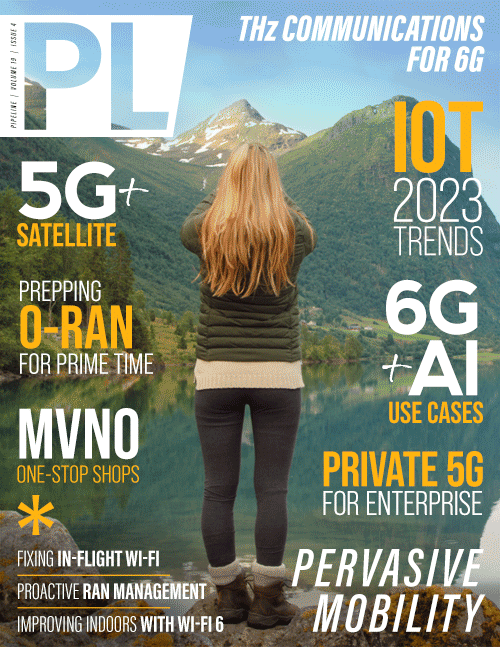Identifying 6G Use Cases and Future Trends
In future intelligent factories, 6G will enable ultra-high resolution imaging monitory systems and remote operation platform systems. Intelligent factories will leverage these superior sensing solutions to implement contactless, ultra-high precision detection, tracking, and quality control. This enables applications such as detection of slits or leakage on products or equipment using 6G communication networks and devices without the need to install extra infrastructures.
Network evolution
AI can be a tool to optimize performance, but it can also be a general service provided by the mobile network to enable new applications. This is referred to as AI as a service (AIaaS), in which the network with an AI plane or layer will be able to expose and serve distributed AI learning and inference as native AI services where needed.
AIaaS could be utilized by the mobile communication network itself for operation and management (OAM) purposes to realize the vision of zero-touch autonomous networks. For instance, network configuration, function implementation, and more can be implemented, operated, and managed by the network system itself through the continuous learning capabilities offered by AIaaS through the network. The training of the AI models as well as the reference through the AI models for these automation tasks would need the communication, sensing, and computing functions integrated in the 6G networks as a whole, especially when large-scale training and inference models are incorporated on distributed edge nodes. Such distributed nature is the key to make the whole computation and resource management scalable toward more complex tasks and larger areas of intelligence.
Similarly, AIaaS would be an integrated service of the 6G network to enable other use cases for operators’ own operational necessities such as dynamic traffic and resource management, as well as the energy-saving mechanisms trying to follow those dynamics. Data management is another example of applications that would benefit from AIaaS. Obtaining vast amounts of data does not mean that the data is either high-quality or usable. As such, AIaaS is necessary to support efficient data processing to select high-quality data while reducing computation complexity and energy consumption.
Besides serving the requirements from the operator’s network itself, an important aspect of AIaaS is to create new values by providing distributed AI solutions through the mobile network to external (third-party) user applications, including those driven by deep neural networks. The capability to provide highly efficient and fast convergence training as well as low latency inference would be the key to realize intelligence-of-everything for future humancentric social services as well as advanced smart vertical industries. Examples of the enabled third-party user applications may include but not be limited to vision (image and video) recognition, activity recognition, as well as automatic security inspection in smart factories, and health monitoring in a smart hospital.
6G vs. 5G
At first glance, some of the use cases appear to be in the context of 5G and 5G-advanced. An important observation since the launch of 5G is that the growth in data across mobile and fixed networks has been enormous, driven primarily by the increasing use of video streaming across all media platforms. As high-capacity networks have become widely available, growth in the use of consumer smartphone apps that use video as the primary means of engagement has followed. Further, the COVID-19 pandemic has dramatically driven data growth, with work-from-home and remote-learning driving the wide-scale adoption of video conference platforms unimaginable just a few years earlier. Together, these changes in services and consumption have influenced network developments in way that were unforeseen when 5G use cases were proposed.
Use cases should, therefore, be recognized as being speculative in nature. At least as important is the ability for mobile and fixed networks to continue to scale, in a flexible way, that is sustainable, energy efficient and cost-effective in order to address the inevitable growth in demand in future decades while minimizing the impact on the environment.
Note: This article features and cites the NGMN White Paper “6G Use Cases and Analysis” developed by the NGMN 6G project team.



















